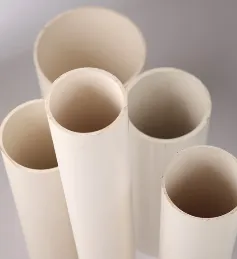Nov . 28, 2024 14:27 Back to list
Stick Welding Rods for High-Strength Projects: Top Choices
When tackling high-strength welding projects in industries like construction and structural engineering, the choice of welding rod is critical. Different types of stick welding rods are designed to handle varying materials, strength requirements, and environmental conditions.

PVC Square Rod: Versatile and Durable for Structural Welding
PVC square rod is commonly used in high-strength welding projects where durability and shape stability are essential. This rod type is especially suitable for applications that involve heavy-duty construction and structural frameworks, as PVC is known for its resistance to environmental stressors such as chemicals, UV light, and moisture. The square shape allows it to fit seamlessly into various applications, providing a stable bond that’s less prone to warping or bending under high-stress conditions.
Using a PVC square rod offers a balance of strength and flexibility, making it ideal for projects where both structural integrity and a lightweight material are required. Because of its resistance to corrosion and degradation, PVC square rods are often chosen for outdoor applications, where they must withstand weathering while maintaining their strength.
Polyethylene Welding Rod: High-Impact and Chemical Resistance
Polyethylene welding rods are highly sought after for their impact resistance and chemical inertness, making them suitable for projects that involve harsh environments or exposure to chemicals. These rods are compatible with various types of thermoplastic materials, allowing welders to create robust and durable joints, especially useful in the automotive, plumbing, and manufacturing sectors.
The flexibility of polyethylene welding rods makes them a practical choice for high-strength projects, as they can handle movement and pressure without cracking or breaking. Additionally, polyethylene rods have a low moisture absorption rate, which enhances their durability in wet or humid conditions. This unique quality makes them highly effective for applications where water resistance is crucial, such as in outdoor storage tanks or irrigation systems.
HDPE Plastic Welding Rods: Ideal for Heavy-Duty and Structural Projects
HDPE plastic welding rods are widely used in heavy-duty applications due to their exceptional durability and resilience. These rods are made from high-density polyethylene, a thermoplastic that offers great resistance to impact, chemicals, and UV radiation. HDPE welding is particularly popular in structural applications such as tanks, pipes, and industrial containers, where a reliable and strong weld is crucial for safety and functionality.
HDPE plastic welding rods not only provide a strong weld but also allow for some degree of flexibility, reducing the risk of cracking under pressure. Their durability makes them suitable for high-stress environments where long-lasting performance is a must. Welders appreciate HDPE rods for their consistent melting point, which enables a smooth, reliable welding process that is less likely to suffer from inconsistent joints.
HDPE Welding Rod 4mm: Precision Welding for Structural Applications
The HDPE welding rod 4mm is a specific size of high-density polyethylene rod that offers precision and control in welding. This size is perfect for detail-oriented tasks within large-scale structural projects, providing welders with a reliable option for creating smooth and secure joints. With a 4mm thickness, this rod is designed to handle high-impact situations and is often used in projects requiring precise and strong bonds, such as in pipelines and large industrial tanks.
Due to its controlled size, the HDPE welding rod 4mm is preferred in applications where a uniform, high-strength weld is necessary. Its consistent melting characteristics make it easier for welders to achieve a seamless bond with minimal risk of fractures. Additionally, this rod’s compatibility with HDPE materials makes it an essential choice in industrial settings where strength, precision, and chemical resistance are required.
Thermoplastic Welding Rod: Adaptable and Strong for a Variety of Materials
Thermoplastic welding rods are highly versatile and can be used across various welding projects that involve different thermoplastic materials, including polyethylene, polypropylene, and PVC. These rods are essential for creating robust, durable joints in applications where strength and adaptability are crucial. With excellent resistance to temperature fluctuations, thermoplastic rods are particularly useful in industries such as automotive manufacturing, where components are often exposed to variable heat and stress.
One of the key benefits of a thermoplastic welding rod is its ability to create a flexible but strong bond. This rod type is commonly used in high-strength applications that require materials to withstand bending and stress without cracking. Whether in HVAC systems, automotive parts, or industrial storage solutions, thermoplastic rods provide the adaptability needed to handle different materials while ensuring a reliable and long-lasting bond.
For projects that demand precise control and impact resistance, the HDPE welding rod 4mm offers unmatched accuracy, while thermoplastic welding rods provide versatile solutions for bonding various materials with lasting strength. Each of these rods brings its unique set of properties to high-stress applications, ensuring that the welds hold up under challenging conditions.
-
Welding Rods: The Backbone of Plastic Welding Applications
NewsJun.06,2025
-
PVC Sheet: A Versatile Material for Modern Construction and Design
NewsJun.06,2025
-
PVC Rod: A Reliable and Versatile Material for Industrial Applications
NewsJun.06,2025
-
Pipe Fittings: Essential Components for Secure and Efficient Plumbing Systems
NewsJun.06,2025
-
HDPE Sheet: Durable, Versatile, and Eco-Friendly Plastic for All Applications
NewsJun.06,2025
-
HDPE Pipe Solutions: Durable, Versatile, and Built to Last
NewsJun.06,2025

